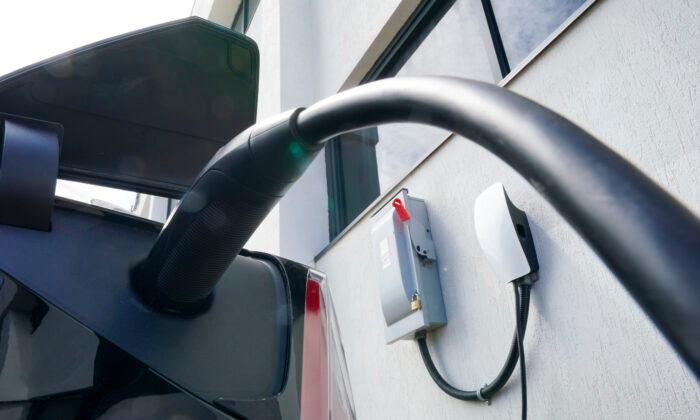By 2026, a fifth of new passenger vehicles sold in Canada will have to be zero-emission, according to regulations proposed by Environment Minister Steven Guilbeault on Wednesday. By 2030, that would jump to 60 percent. By 2035, to 100 percent.
The mandate follows goals already announced by the government to phase out gas-powered passenger vehicles. The proposed regulations will be officially published Dec. 30 and open to a 75-day consultation period.
Parliamentary Secretary Julie Dabrusin, who announced the proposed regulations, said automaker penalties for not meeting the sales mandate would be “phased in.” Automakers are already working under emissions mandates, she said. “It would be the same system that they have already been working under, but now it’s just going to be applied to sales targets.”
She said people who want electric vehicles are unable to get them, with waitlists of months or years in some parts of Canada. In British Columbia and Quebec, where provincial sales mandates are in place, wait times are shorter, she said. Those provinces also offer rebates on electric vehicles, on top of the $5,000 federal rebate.
Daniel Breton, president of Electric Mobility Canada, said at the announcement that the sales mandate would provide “market predictability,” encouraging growth of the electric vehicle industry. He said the regulation is needed because the industry has not been changing voluntarily.
Critical Minerals
Dabrusin said increased electric vehicle production will rely on Canada’s recently announced critical minerals strategy. The minerals, such as lithium, zinc, and cobalt, are used in making electric vehicle batteries and other zero-emission technologies. “Canada is well positioned to meet the demand for raw materials mined to make batteries,” she said.Targets
In the first half of this year, 7.2 percent of new vehicles were electric, according to Statistics Canada. That will have to increase another 52.8 percent by 2030 to meet the mandate’s target.Spokesperson for Environment and Climate Change Canada Nicole Allen told The Epoch Times via email that the new sales mandate aims to change that.
She said the government’s targets are realistic if this mandate is in place and “combined with supportive investments. ... That is why the Government of Canada is also providing financial support for purchasing these vehicles, investing in charging infrastructure, and helping build a Canadian battery supply chain that includes critical minerals and manufacturing.”
Allen said a Regulatory Impact Analysis Statement will be published along with the regulations at the end of the month, which will outline the government’s economic and other analyses that informed the targets.





